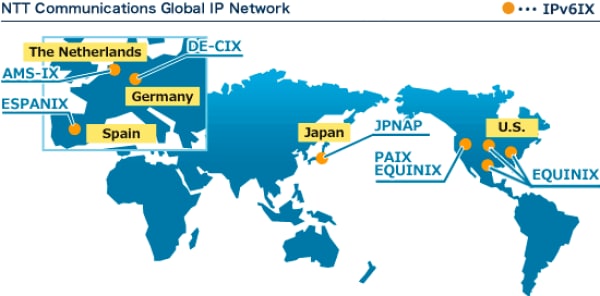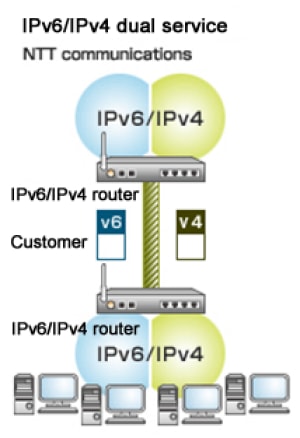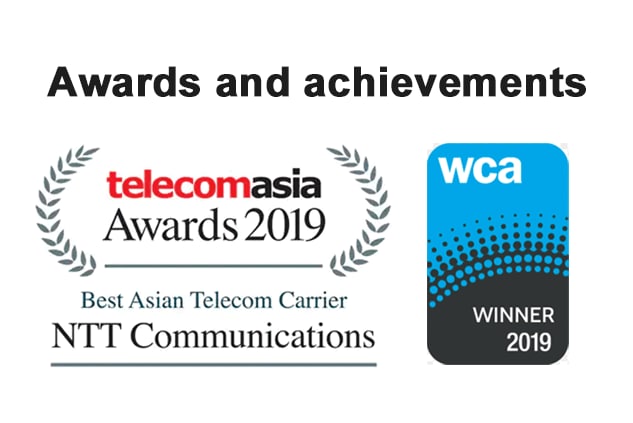
Global IP Network
IPv6 service
This service realizes global IPv6 network transit.

Current as of March 2016
Overview
This service uses IPv6 protocol to directly connect to the Global IP Network, which is a global tier-11 IP backbone, to realize transit to a global IPv6 network. Along with providing the same high network quality as IPv4 transit, it contributes to creating new Internet business.
IPv6 is designed to overcome the limitations of IPv4. For example, IPv4 can only create a maximum of 4 billion nodes on the Internet, but the address space of IPv6 has been expanded from 32 bit to 128 bit, making it possible to create 4.3 billion to the power of four combinations. This number would enable all computers around the world to connect to the Internet.
■High Security Features
IPsec is provided as an optional security feature in IPv4, but in IPv6, it is standard. It is provided on the network side, but in addition it is also provided on the terminal side, enhancing terminal-to-terminal communication security
■Auto IP Address Generator
Setting IP addresses can be troublesome work until you are familiar with it. With IPv6, when a device is connected by a line, the IP address is generated automatically, eliminating the need to set the address and making it easier to connect to the Internet
■Peer-to-Peer Function
With IPv6, addresses can be abundantly provided, thereby eliminating the need to differentiate between global addresses and private addresses, and enabling direct communication between all terminals. As a result, it is easier to communicate with mobile devices and appliances, and large data can be directly sent to a partner terminal
■Multicast Function
In an IPv4 environment, data transmission is basically one-to-one, and to have multiple people view the same source requires repeatedly sending data for only that number of people, increasing the load on the server and preventing smooth communication. IPv6, however, supports multicast, which enables the same data to be simultaneously sent to multiple people. The advantages are that the sending terminal only has to send the packets once, reducing the load on the terminal and network and there is no need to manage the addresses of the individual destination terminals. Only the sending group address needs to be managed
1: Global tier-1 is a large-scale ISP group that does not have to purchase Internet route information from another business.
Service Specifications
We offer "IPv6/IPv4 Dual Service", which provides a IPv6/IPv4 dual connection to global IP networks over a single access line.

NTT Communications' Contributions to IPv6 Technology
NTT Communications has contributed to the development and deployment of IPv6 technology since 1996.
The company was the first to commercialize this technology, and in 2001, it developed the world's first commercial-based IPv6 connectivity service in Japan.
The company's experienced IPv6 engineers have been working at the forefront of IPv6 for nearly 20 years.
NTT Communications' History of Providing IPv6 Service
- 1996: NTT Research begins operation of the one of the world's largest IPv6 research network
- 1999: NTT Communications begins trials of IPv6 tunneling for Japanese customers
- 2001: NTT Communications begins the world's first commercial-based IPv6 connectivity service in Japan
- 2002: NTT Communications receives the "Best Technology Foresight" award from World Communications Awards (WCA) for its IPv6 global product
- 2003: NTT/Verio begins IPv6 native, tunneling, and dual stack commercial service in North America
- 2004: NTT Communications' IPv6 native service and IPv6/IPv4 dual service becomes available worldwide
- 2004: NTT Communications receives an award from WCA for most innovative service for its IPv6/IPv4 global dual service

 EN
EN






